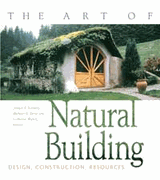
Home
About Us
What's New
Workshops
Certification
Training
Projects
Publications
House Plans
Image Galleries
SBE Directory
Resources
Consulting
Blog
Links
Contact Us
FREE Straw Bale Emergency Shelter Plans
Builders Without Borders Straw-Bale Construction Guides
The Last Straw -
The International Journal of Straw Bale and Natural Building
David and Sara Brave Heart with the On The Wings of Eagles organization hope to demonstrate sustainable building to the Lakota of Pine Ridge Indian Reservation and support other families who want to build this way. To help as many people as possible they asked for assistance from the Geiger Research Institute and Builders Without Borders in designing a home that will cost less than $5,000. Poverty is very high in the area and unemployment is over 75%.
Both organizations emphasize innovative solutions that utilize locally available materials. In this case, small diameter trees for trusses and other wood members are readily available on their land. Pallets are also plentiful.
[Note: Alfred von Bachmayr, another BWB member, developed a truss made entirely of salvaged wood pallets. See The Last Straw, Issue #38, The Pallet Truss: A Low Cost Alternative Roof Structure. Pallet trusses are an excellent option where other sources of wood are unavailable.]
The parallel truss design described here is very similar to the one developed by von Bachmayr. The main difference is the use of pine poles for the top and bottom chords in place of pallet material.
The chords (the long parallel members) use 4"-5" tapered poles, milled S3S (surfaced with three flat sides, the fourth side can be left as is). The top chord is milled on the top (which creates a flat surface for purlins) and on two sides. The bottom chord is milled on the bottom (which creates a flat surface for ceiling materials) and on two sides. After milling, the dimensions of the chords are 2” thick with widths tapering from approximately from 3-1/2" to 4-1/2". Crown the poles before milling them for optimum strength.
Web members made of pallet wood join the top and bottom chords together. These are approximately 5/8" x 3-1/2" in size. They are placed 90 degrees to each other and alternated from side to side (half are fastened to one side of the chords, the other half are fastened to the opposite side of the chords). Cut the web members from the pallet using a pattern to ensure uniformity.
Each connection between web members and chords is pre-drilled and fastened with three 2-1/4” deck screws and PL400. This eliminates the problem of nails splitting the wood.
Truss dimensions: The size and spacing of these trusses is based on the typical size of straw bales (be sure to verify the dimensions of the bales in your area). Trusses 25" wide allow for standard-sized bales with about 1" extra space to ensure the bales fit properly. Using a layout of 36" OC (on center) provides space for two bales on edge with an extra 2" or so to help maneuver the bales into position. Any gaps between the bales should be stuffed with straw-clay ( loose straw coated with a light slurry of clay) for improved energy performance. Coat the bales on the ground with clay and allow to dry before installation. Be sure to use noncombustible materials around stovepipes.
Some key highlights of this truss design:
- Using poles eliminates the awkward and time consuming process of assembling pallet wood for the chords.
- Full-length poles are stronger than numerous short pieces of pallet wood assembled together. Any component is only as strong as its weakest link - one poor joint could cause a structural failure.
- This truss provides sufficient roof insulation where temperatures can range from minus 29 degrees to 120 degrees Fahrenheit.
-
Bales are supported by 1-1/2" pallet boards.
- U.S. forests are overcrowded with small trees. Thinning these trees reduces the risk of forest fires, improves the health of the forest and saves shipping and construction costs.
- This system creates local jobs. A trained workforce will help ensure more consistent, higher quality trusses.
- Very few tools are required.
Do-it-yourselfers can mill their own wood instead of buying it from a lumberyard. The Beam Machine is one example of a low-cost chainsaw attachment that mills straight edges on poles. This $40 guide attaches to most chainsaws. It guides the saw by sliding along a 2" x 4" tacked to the pole. More information on this attachment is available at: Beam Machine.
In addition to providing truss material, small diameter wood can be used for studs, joists, plates, purlins, window and door frames, and other components. An article with more information on the use of small diameter wood can be found on our website at Small Diameter Wood - An Underutilized Building Material.
GEIGER RESEARCH INSTITUTE OF SUSTAINABLE BUILDING
Crestone, Colorado 81131 Email: Contact Information

